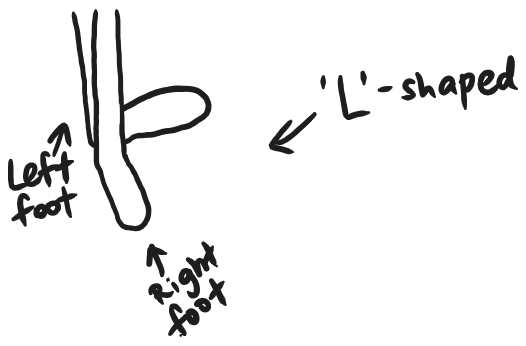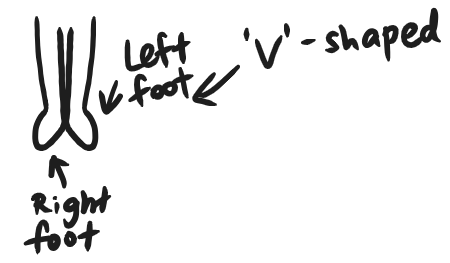Table of contents
Open Table of contents
Introduction
Turning on a march with KE KIRI/KANAN/BELAKANG PUSING is arguably one of the harder drills. Turning on a march with PUSING has a timing, and unlike BELOK, allows you to turn 180° on a march.
The classification of footdrills are blurry. KE KIRI/KANAN PUSING are in FD Gold, and while the NCDCC Footdrill Command List states that KE BELAKANG PUSING on a march is FD Gold, CLTs and AFIs whom I asked while in HQ said it was FD Silver (the AFI said that it was either FD Bronze or Silver). That’s why I’ve appended both tags, in case you were wondering.
KE KIRI/KANAN PUSING
The timing for turning left or right on a march is check-one, KE KIRI PUSING is given on the right foot, while KE KANAN PUSING is given on the left foot.
KE KIRI PUSING
For turning left, once the command is given when marching on the right foot, you take one step with your left foot on check, stop and stomp your right foot on one. Afterwards, you turn left 90° without stomping and march, starting on the left foot.
KE KANAN PUSING
For turning right, once the command is given when marching on the left foot, you take one step with your right foot on check, stop and stomp your left foot on one. Afterwards, you turn left 90° without stomping and march, starting on the right foot.
⚠️ IMPORTANT: Remember to first take a step with your right foot, not your left.
KE BELAKANG PUSING
This is also known as T-L-V, if you’ve heard of it before. The command is given on the left foot, and the timing is check-T-L-V-check. On check, you take a step forward on your right foot. Then, on T, you slide your left foot in front of your right foot horizontally, to form a ‘T’ shape with your feet, as depicted in the following diagram:

Your upper body should turn right to face the direction your left foot is pointing towards.
Then, move your right foot such that it now forms a right angle with your left foot on L. A right angle is a 90° angle, in case you’ve forgotten. Your feet should form an ‘L’ shape now. See the following diagram for assistance:

Again, turn your upper body right so that it is facing in the middle of both feet.
Next, on V, move your left foot diagonally such that it now forms a ‘V’ shape with your right foot. Somewhere around 45° in the middle is alright. Take a look at the diagram below if you need help:

Yet again, turn your upper body to the right so that it faces the front.
Lastly, on the last check, stomp your right foot, and then start marching with your left foot. You should be 180° from where you started.
⚠️ IMPORTANT: Stomp on each turn on
T,L, andV.
Conclusion
Turning on a march with KE KIRI/KANAN/BELAKANG PUSING is definitely harder, and has some things you’ll need to take note that make them different from each other, static turning, or BELOK. Good luck!